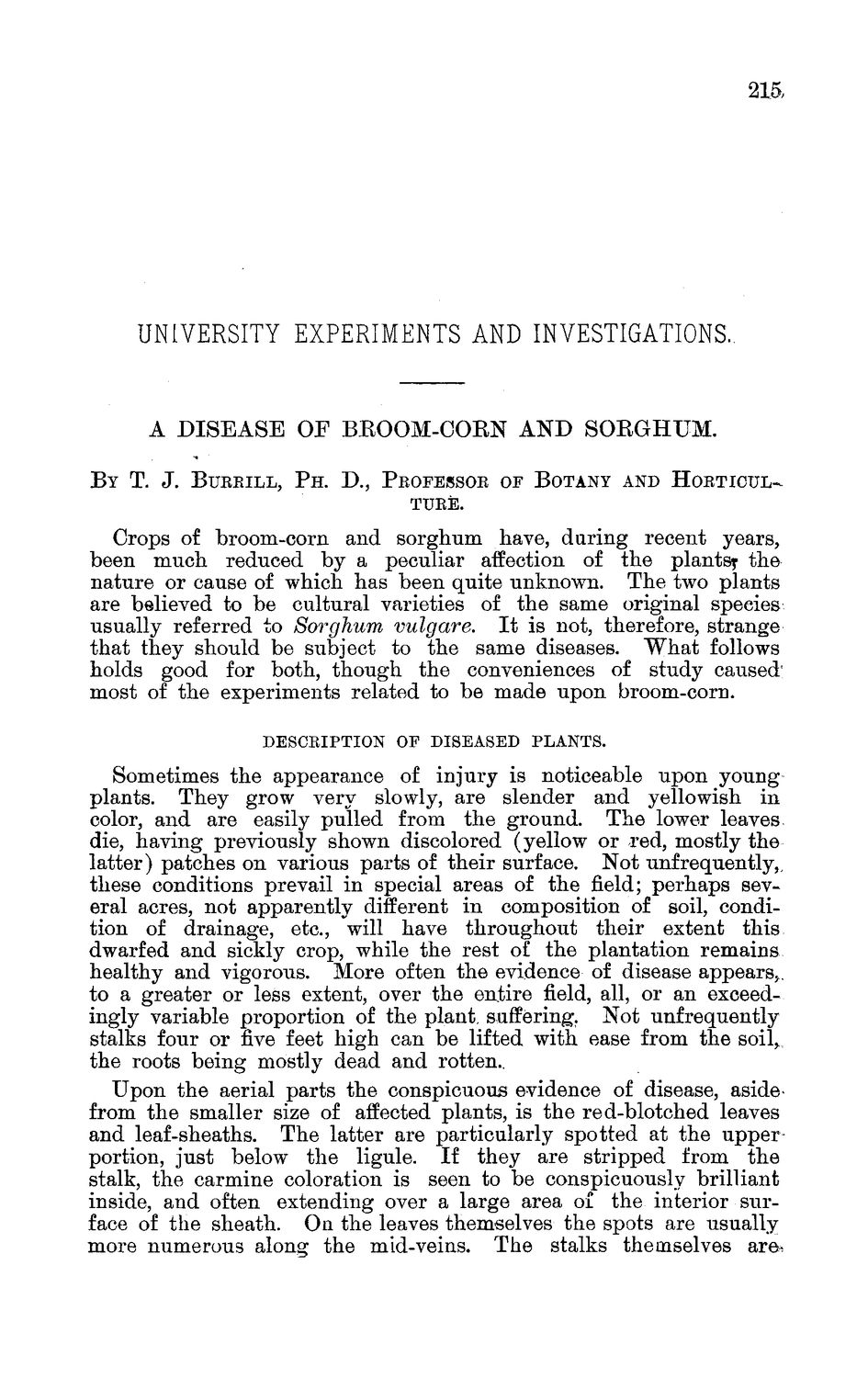| |
| |
Caption: Board of Trustees Minutes - 1888
This is a reduced-resolution page image for fast online browsing.

EXTRACTED TEXT FROM PAGE:
215, UNIVERSITY EXPERIMENTS AND INVESTIGATIONS. A D I S E A S E OF BEOOM-COKN AND SOKGHUM. B Y T. J. BURRILL, P H . D., PROFESSOR OF BOTANY AND H O R T I C U L TURE. Crops of broom-corn and sorghum have, during recent years, been much reduced by a peculiar affection of the plants? the nature or cause of which has been quite unknown. The two plants are believed to be cultural varieties of the same original species usually referred to Sorghum vulgar e. I t is not, therefore, strange that they should be subject to the same diseases. What follows holds good for both, though the conveniences of study caused most of the experiments related to be made upon broom-corn. DESCRIPTION OF DISEASED PLANTS. Sometimes the appearance of injury is noticeable upon young plants. They grow very slowly, are slender and yellowish in color, and are easily pulled from the ground. The lower leaves die, having previously shown discolored (yellow or red, mostly the latter) patches on various parts of their surface. Not unfrequently,, these conditions prevail in special areas of the field; perhaps several acres, not apparently different in composition of soil, condition of drainage, etc., will have throughout their extent this dwarfed and sickly crop, while the rest of the plantation remains healthy and vigorous. More often the evidence of disease appears,, to a greater or less extent, over the entire field, all, or an exceedingly variable proportion of the plant suffering. Not unfrequently stalks four or five feet high can be lifted with ease from the soil, the roots being mostly dead and rotten.. Upon the aerial parts the conspicuous evidence of disease, asidefrom the smaller size of affected plants, is the red-blotched leaves and leaf-sheaths. The latter are particularly spotted at the upper portion, just below the ligule. If they are stripped from the stalk, the carmine coloration is seen to be conspicuously brilliant inside, and often extending over a large area of the interior surface of the sheath. On the leaves themselves the spots are usually more numerous along the mid-veins. The stalks themselves are^
| |